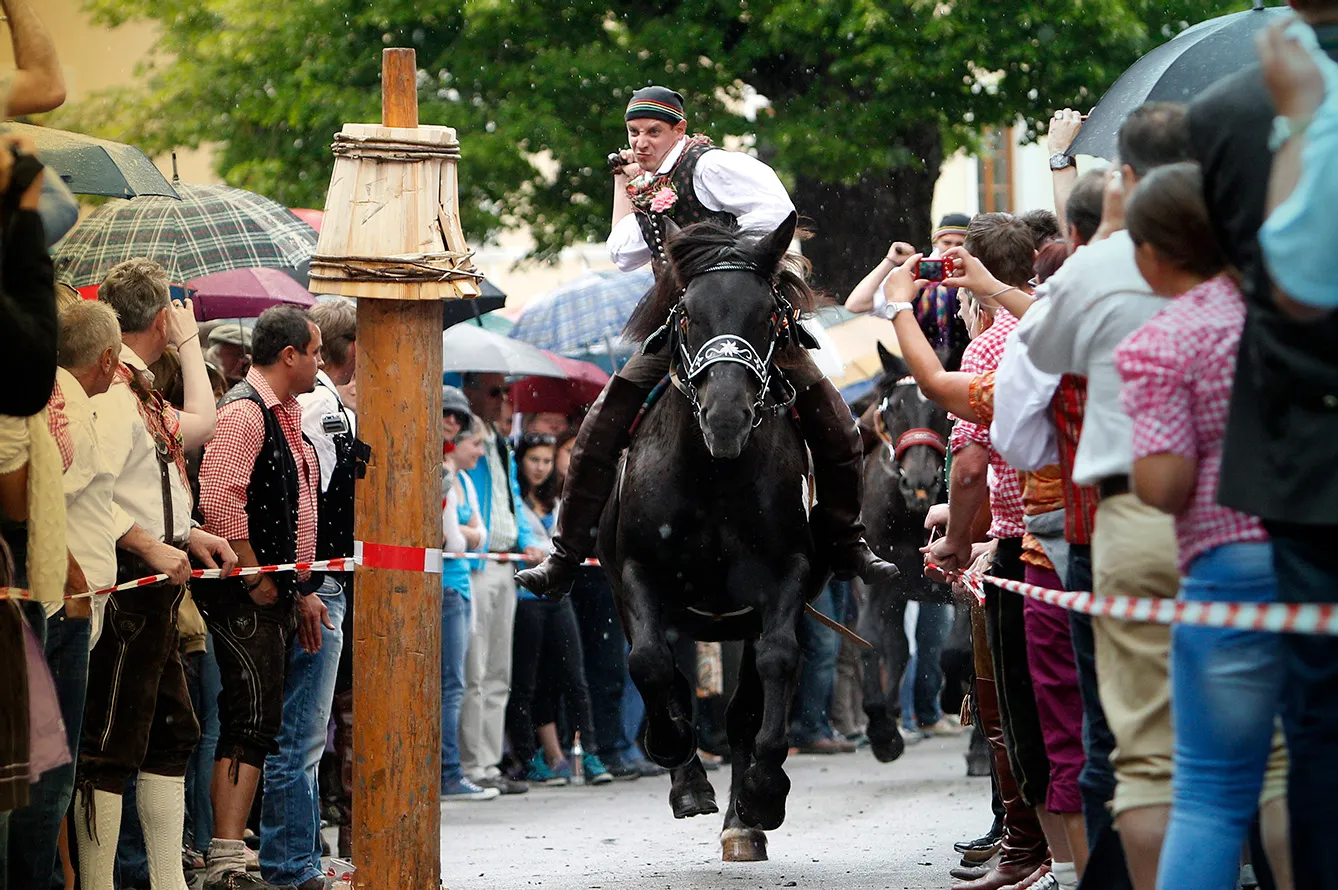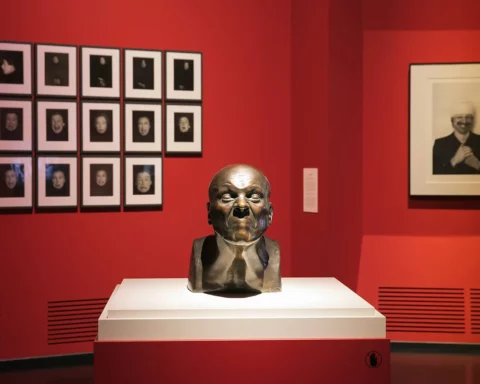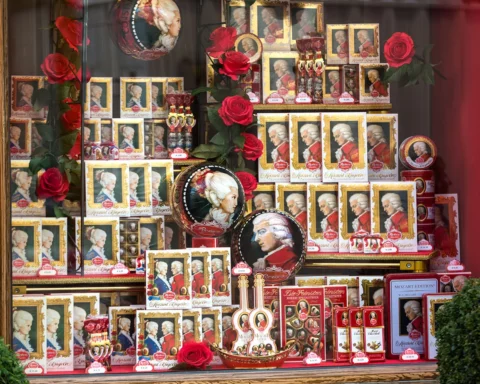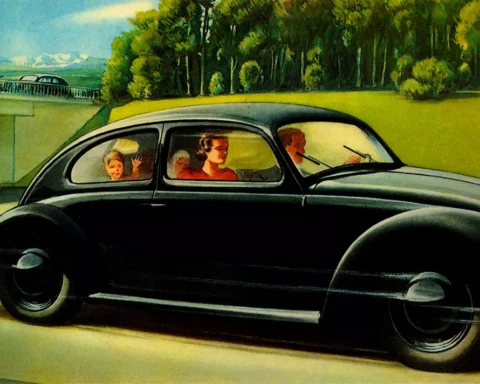A man thunders past on a horse, swinging his iron club at the wooden barrel mounted to a pole. It produces a satisfying thump, and the crowd cheers as the rider lets out a high-pitched ‘siiiiiiiiip!’. Seconds later, another rider follows. He strikes so hard that he almost comes off his steed but is rewarded as staves fly in all directions. The onlookers – dressed in dirndl and lederhosen – roar their approval.
The Kufenstechen Kirchtag competition
Almost every village in Kärnten – a region in South Austria – hosts its own kirchtag; the festivals are spread throughout the year from spring to autumn. But only villages in the lower Gail valley have kufenstechen, where young men compete to destroy a wooden barrel with metal clubs and win the village’s fairest maiden.
Originally an opportunity for unmarried villagers to mingle, it’s said that kufenstechen’s origins may lie in a punishment dished out to invading Ottoman Turks, who would have passed through the Gail valley on their western raids, it being one of the few routes through the high mountains of the region. Others suggest its beginnings are less brutal and that it was simply a game designed to show off the horsemanship of the local men.
Boots, belts, and bobbled stockings
Entwined with symbolism, the day begins at the village church. Young men, dressed in crisp white shirts, patterned waistcoats, and knee-high leather boots, are accompanied by their female partners. Wearing bobbled lace stockings, red head scarves, and layered skirts that flare out like a bell bottom, each woman sports an elaborately decorated belt embroidered with colored beads and quills.
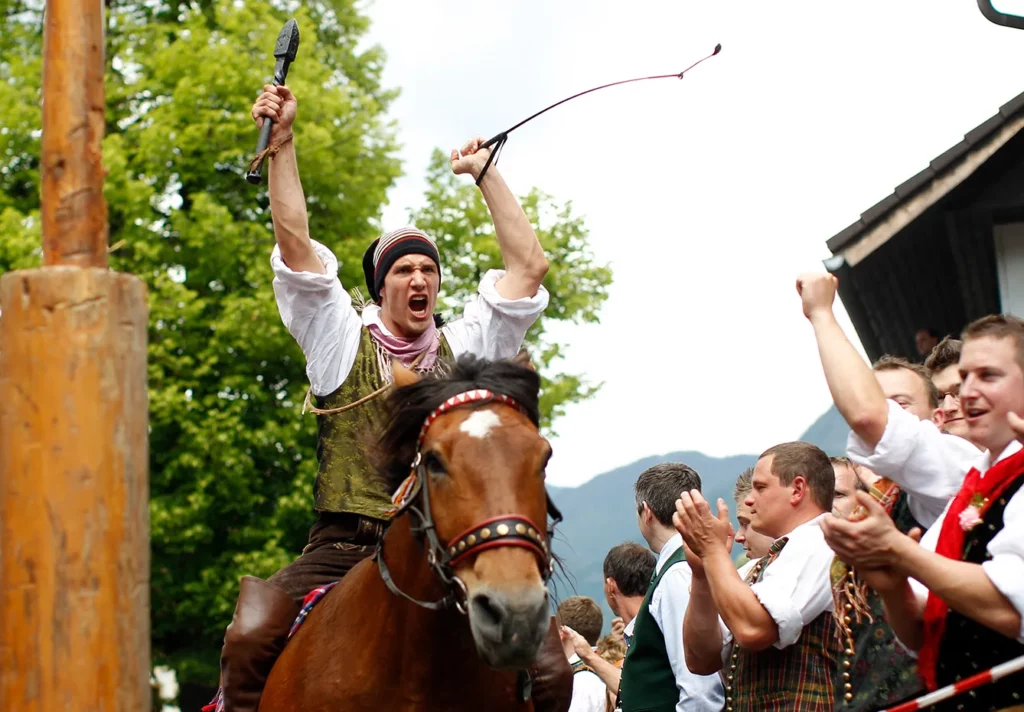
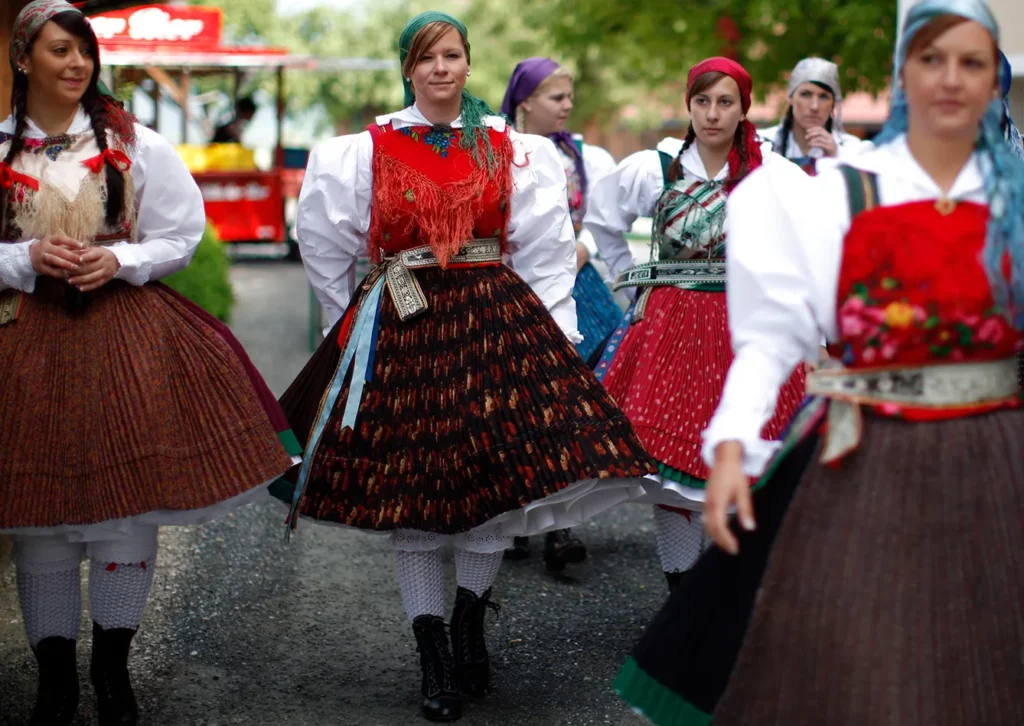

A small but extremely loud canon is fired several times during the church service, after which the couples file out, arm in arm, then polka to music performed by a band of accordion, tuba, and trumpet. Serving white wine spritzers to the congregation outside, the procession then walks to the site of the event, and the party begins.
There follows dancing under the village Lyme tree and the signing of traditional songs. Locals attend the festival dressed in their finest lederhosen and dirndl, and the day is filled with feasting and drinking. Sausage and sauerkraut are washed down with pilsner, schnapps, and spritzer, music fuels almost non-stop dancing on a wooden floor, and people watch frivolities from long trestle tables under a marquee.
A source of pride
The entire event is organized by a committee made up of young men and women from the village. Typically joining in their late teens, they form part of the organizing group until they become married. Indeed, one of Kirchtag’s traditional functions was ‘bridal viewing’, a place to meet your future wife. Locals have an encyclopedic knowledge of their kirchtags; they remember who won in which years, who fell from his horse, and who was partnered with who. It’s a significant feat of organization; there are horses to acquire, marquees to erect, kegs of beer to order, caterers to arrange, and bands to book. Kirchtag gives the village youth something to work towards and be proud of; as the hosts of their home’s biggest party, they are highly motivated to throw a good one.
Kufenstechen Continues
Kufenstechen is not without its critics. The riders gallop bareback, and almost every year, somebody gets injured, sometimes seriously. There has also been some discussion over the male-dominated nature of the event and what it symbolizes; women are not permitted to ride, and the ritual of the winning horseman penetrating a ring of flowers with his club is an obvious innuendo.
However, kufenstechen at Kirchtag is extremely popular in the Gail valley. It provides small communities with a focus for the year and a continuation of a long-running tradition. It’s a rare chance for the village to come together, enjoy an exciting spectacle, and to drink, dance, and be merry.


